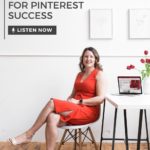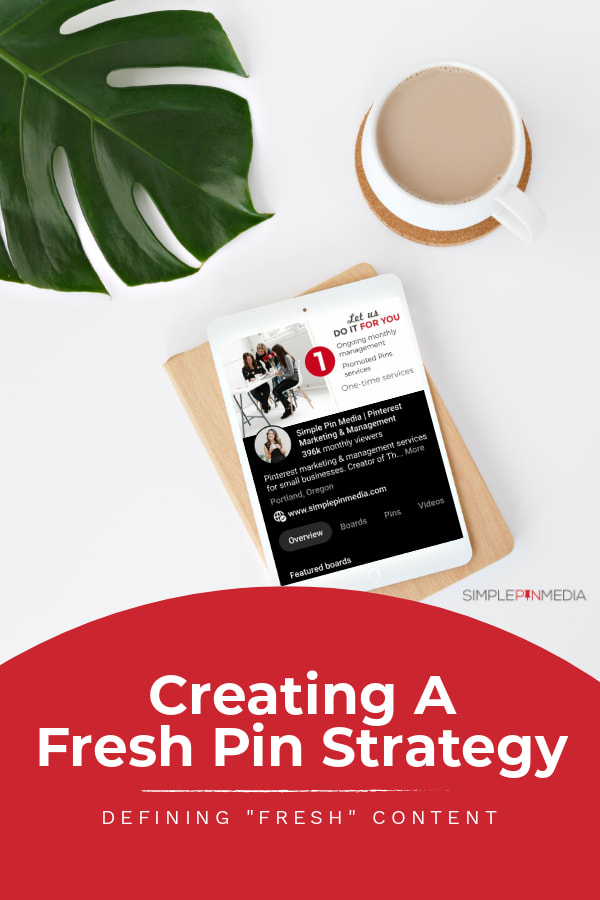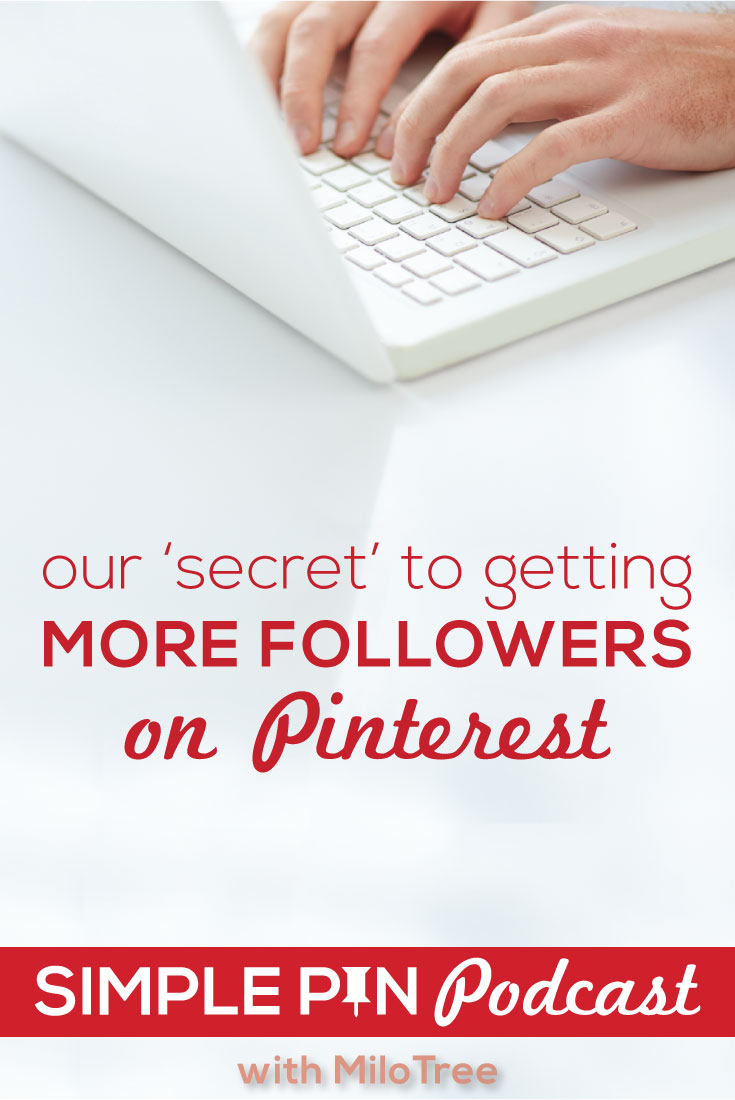Static Pins, video pins, idea pins…we talk a lot about what it takes to have a successful Pinterest strategy, but that is only one piece of the puzzle. In this episode, we are going to address another key piece…your website branding.
Today we are talking about branding for your business and why you need a well-branded website for success, especially on Pinterest. We’ll explain what branding is and breakdown the key elements. We’ll also discuss the important role brand identity plays in making you memorable to your audience.
Let’s dive into my conversation with Madison to learn all about website branding and how you can make sure that your brand has an identity that stands out.
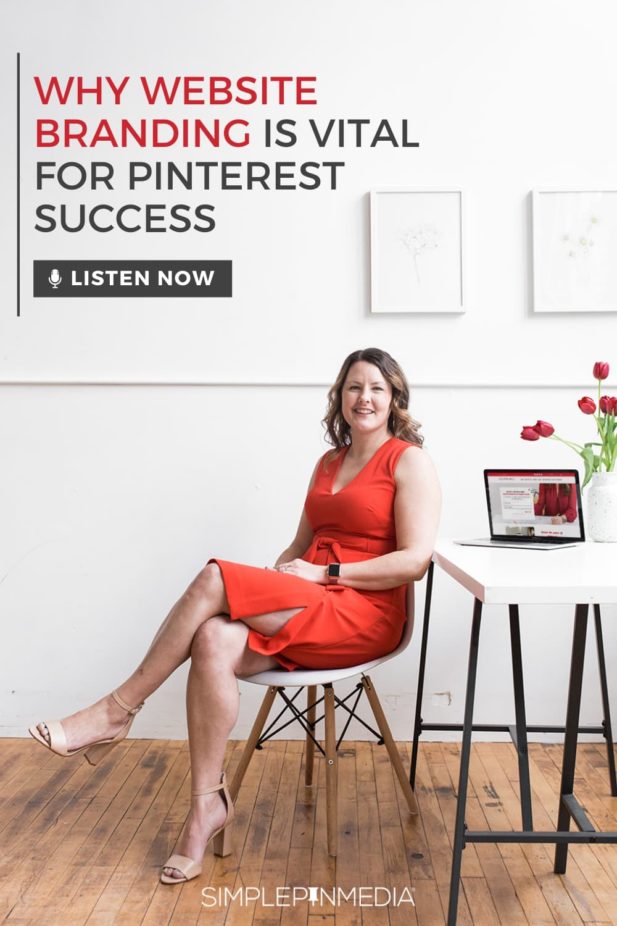
Madison is a food blogger turned web designer who runs Grace + Vine Studios. She helps clients create a brand identity and website that reflects their long-term goals for their business.
Madison majored in graphic design in college. After graduating, she found herself in a typical corporate job working 40 hours a week. She began blogging and opened an Etsy shop for design in her free time.
Related: Creating a Pinterest Strategy for Etsy
She discovered that most of her food blogger clients need educated on topics like building an audience, creating your brand, and designing a website that is strategic, beautiful, and connects with their ideal audience. She decided to go all-in on that side of her business about three years ago.
Website Branding 101
Madison shared that, for most people, branding is all about the visual appearance of your business.
If you close your eyes and visualize a store like Target, you’re probably imagining their logo. But you’re also visualizing what the store looks like inside. You see yourself pushing your red cart with your Starbucks cup in it.
– Madison
But that visual is only one part of branding.
Your brand identity needs to be nailed down prior to the visual aspects of your brand. Brand identity includes things like:
- understanding who your target audience is
- knowing your brand values
- the messaging behind what you do.
How to Begin Shaping Your Brand Identity
Branding should encompass a holistic view of what a company or a person is in terms of visual identity, values, and messaging.
Madison has found that some clients are super visual and creative. These people can do a fantastic job of creating the vision board of their dreams to represent the look of their brand. Other clients struggle with that visual side, but they can tell you who their ideal audience is. They have a good idea of who they are talking to and how they can help them.
Madison attacks the brand strategy process from both sides. She likes to help her clients explore branding from the point of view of the audience. She asks:
When I look at your brand, what am I going to experience as the person on the other side?
I’ve discovered that people who try to DIY their branding often skip over this process and go straight to the fonts and colors. In a year they find that it just doesn’t feel right, but they can’t explain why.
-Madison
Madison mentioned creating a vision board. Her team often uses Pinterest boards to help their clients to formulate a brand identity.
Her team guides clients through this process by asking them to search on Pinterest looking for things they are attracted to or the things that just speak to them for whatever reason. They ask clients to include a variety of different types of images, and not just images that represent the scope of their business.
When Madison and her team look at a client’s board, they are looking for a common thread. She says most clients usually start with a chaotic board with 20-50 images. From there they can refine, removing things that don’t fit as well.
Madison says they don’t talk about fonts and logos at this stage. That is a conversation they have separately once the foundation is established. Madison says the fonts and colors can be pulled from a Pinterest board once it feels like it has been well-curated.
Brand Color and Font Choice
Once the brand foundation is established, it’s time to move on to the other elements of branding.
Two of those elements include brand colors and fonts.
Madison says there isn’t a general rule about color but there are colors that should be avoided for certain brands. Website accessibility is a big consideration as well when it comes to selecting website branding colors. For the visually impaired, super light colors can be hard to read. There needs to be a certain degree of contrast between the background color and font color on a website for it to be compliant with current web accessibility guidelines.
Aside from accessibility, Madison says It generally comes down to the type of brand you have, who your audience is, and what you are doing that helps to determine which colors are the best fit for your brand.
When it comes to fonts, the name of the game is readability.
Here at Simple Pin Media, we consistently advise clients to avoid script fonts in Pinterest images. People are accessing Pinterest primarily via the Pinterest app on their phones. Script fonts are really hard to read on that tiny phone screen.
As a designer, Madison loves script fonts and thinks they can be great to add to a brand to give it some personality, but she would never use script fonts for the main headline. She saves script fonts for accents only.
Choosing fonts for your website branding is very similar to choosing them for Pinterest. You want fonts that are very easy to read which typically means they are not as fancy. But it doesn’t mean you have to go as stark as system fonts.
Madison says a great test for your font choice is to ask someone older to look at it. If they can’t read it then you shouldn’t use it.
Simple is better when it comes to your font choice. Whether it’s Pinterest images or your website, especially if you’re doing it on your own, Madison recommends using only two fonts. Those who have a really strong eye for design can get away with three fonts.
Sticking with one or two fonts goes a long way to ensure your text can be read and is impactful to your audience.
Images in Your Website Branding
Images are another element of your brand. Getting images right can be a real challenge depending on your industry.
Food bloggers and DIY bloggers create most of the images they are using for their graphics. But people in a service-based industry aren’t normally taking their own photos. They have to find images to use in other ways.
When it comes to images, Madison says one of the biggest issues for people is a lack of consistency. If you don’t have a strong visual brand identity, it can be very tempting to try many different things.
She says experimenting can be great but you need to be consistent with what you use across all elements — fonts, colors, and image styles. The entire visual tone of your brand needs to be consistent.
Related: Should I Use Branded Images on Pinterest?
Stock images are great for people who don’t take their images. Once you have a firm grasp of your color palette, you can find images that pull from that color palette naturally.
At Simple Pin, I often hear people say that they are going through a site rebrand or they are changing up elements of their brand. It seems to be fairly common that at some point, most people feel the need to change their branding.
Madison says rather than a complete 180 degree change in branding, it is common to see there was just a lack of confidence and clarity in the brand identity before the person invested in the process of working on their branding logo and website design.
She believes having clarity in your foundation is important to achieve before trying to pin down a logo, your homepage design, or the type of blog posts you plan to create in the future.
Typically, Madison finds that her clients already know what they want their website branding to feel like, but they just haven’t put all the pieces together.
Her company helps clients put all those pieces together to create a solid brand identity so that when they are ready to pick out an image for Pinterest, they can easily decipher which images feel more in line with their brand. This process keeps a client from going off into left-field with their choices.
Another thing she sees clients struggle with is knowing who they are talking to in their business.
Finding your ‘person’ seems to be one of the mysteries of having a business. There is so much guesswork that goes into it that we never feel quite sure that we know who we are talking to.
– Madison
She works with clients to hone in on their “person” and visualize who they are trying to reach. They might consider nail down aspects of that person such as what they look like, their lifestyle, and their family life. Ultimately Madison says they are trying to determine what their person is struggling with and how the client can help them with that struggle.
Madison believes one of the hardest things for business owners to wrap their heads around is the perspective of the consumer.
Business owners need to remove themselves from the way they interact with their website and focus on how their audience is most likely to interact with it. You need to optimize the experience from your audience’s perspective rather than your own.
Website Homepage Design
As we’ve seen Pinterest prioritize Idea pins, your website’s homepage has once again become very important.
Pinterest inserts a card that has a link to your profile at the end of an idea pin. If a pinner clicks on that card, it takes them to your Pinterest profile. From your Pinterest page, the Pinner can click on the URL link under your name, which will take them to your homepage (where they can try to find more details about the Idea pin).
We’ve suggested that clients include a call to action on their idea pins such as “search Simple Pin Media (keyword) to find more details”. It’s a different way to get to your website than we are used to.
Now, we are starting to look at the homepage differently than we did a few years ago (when it wasn’t considered important).
Madison agrees the homepage IS important. In fact, many clients decide to redesign their site based on a strong desire to revamp the homepage. Appearance and function do matter when people visit your homepage. Madison says we should first think about why someone is landing on your homepage.
Typically speaking, when somebody lands on your homepage, it is because they have already been on another blog post on your site. They click over to your homepage because they want to know what the site is all about and who runs it. They’re usually trying to find content related to the blog post that brought them to the site in the first place.
When they come from that blog post, they are usually new to your website and have come from either Pinterest or Google. Guiding your reader once they land on your homepage is important. Having a search function on the homepage is critical.
Madison’s must-haves for the homepage include:
- Your most recent posts – This content is what they have found most users are looking for when they visit your homepage.
- A little bit about you – A brief summary about who you are and what your site is about.
- A call to action – This is your opportunity to get someone to dive into more of your content or subscribe to your email list.
- Search functionality – This should be on every page of your blog, not just your homepage. It is also helpful to have it in several places on the homepage so it can be easily found.
making your website mobile-friendly & Fast
After you’ve developed great branding and you’ve built the website, it’s important to make sure that your site is mobile-friendly and fast. These are both very complicated topics to address, but a couple of factors play a huge role in site speed.
The first is having themes that are well-coded. She says there are pre-made themes out there that are designed and optimized for site speed. Unfortunately, most are not.
From a content creator perspective, one thing you can do is make sure your image files are compressed. Compressed images may appear a bit grainy when viewed on a large laptop screen. Madison believes that it’s not a problem since most users are not accessing recipes from a desktop computer (and they don’t care about your images as much as you do). The goal is for images to look good on mobile and ensure that those images are not distorted.
It is better to have a site that loads quickly than a site with perfectly crisp, high-resolution images. This is particularly important for content creators who might have five to ten photos on every blog post. Photos take a lot of time to load, especially if someone is loading your site when they are not connected to WiFi.
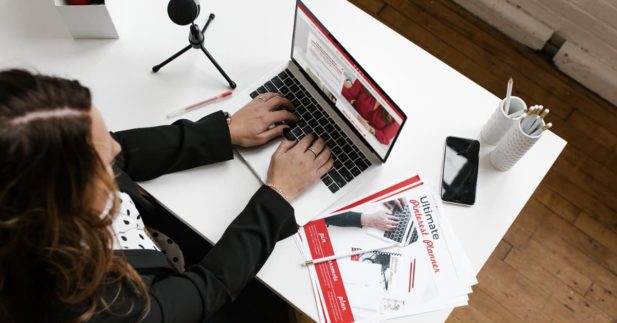
Website Branding Takeaways
To summarize, Madison says knowing your ‘person’ is the foundation of website branding. Knowing who you are helping and what you are helping them with are the key questions that you need to answer. It becomes so much easier to determine brand colors, logo, and website design once this foundation is established.
We have covered a lot of very helpful information with Madison today. I hope it inspires you as you begin your website branding journey or as you consider re-branding.
If you’d like to connect with Madison and learn more about how she works with clients she can be found at graceandvinestudios.com.
Check out Madison’s interview with Kate on her podcast — The Vine Podcast.
You can also connect with Madison on Instagram @graceandvine.
For Further Listening/Reading:

